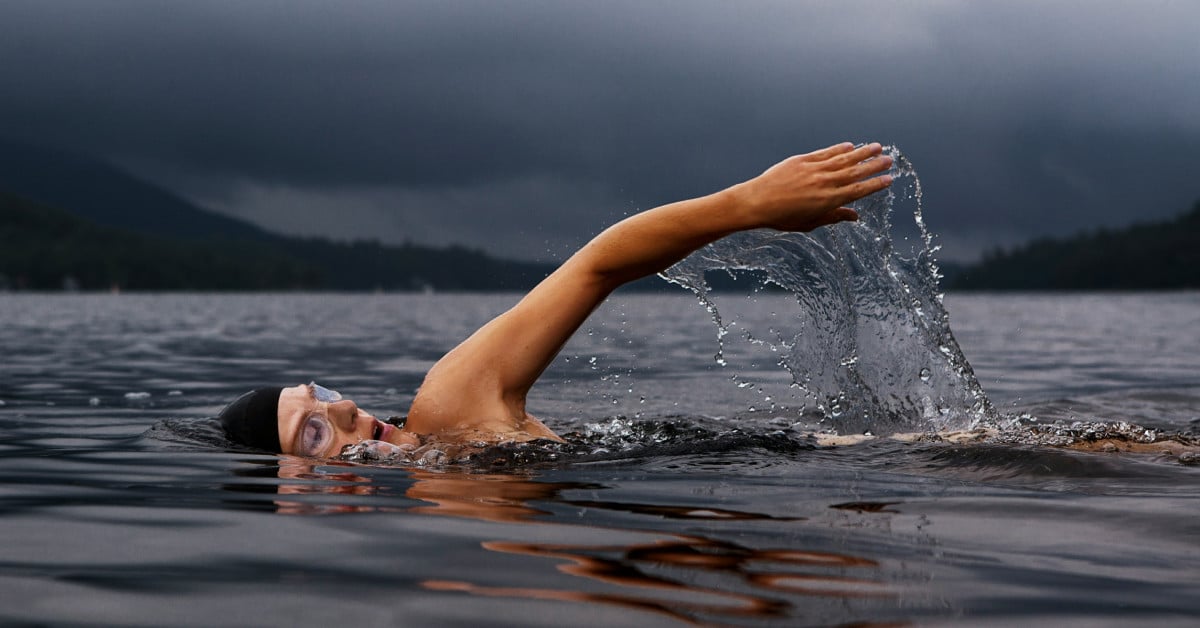Why Bilateral Breathing Is Essential for Every Triathlete
Discover how mastering bilateral breathing can improve your stroke symmetry, race strategy, and comfort in open water triathlons. A must-know skill for beginners and seasoned triathletes alike.
If you’re a triathlete who took up the sport later in life you are more than likely a self-taught swimmer, assuming you didn’t come to triathlon from a swimming background. If you were lucky enough to have good coaching as a youngster, you will probably have had bilateral breathing drummed into you. Bilateral breathing is, as it sounds, breathing to both sides.
All of us have one arm stronger than the other or, even more likely, one arm that is more coordinated than the other. We don’t write with both hands. So, everyone has a side that they are more comfortable breathing towards. It is not always consistently in relation to which of side is stronger though. Sometimes a swimmer will be more comfortable breathing on their strong side because that arm pulls with a bit more force and there is more momentum from that stroke. Sometimes we breath opposite to the side which has the more technically correct catch phase of the stroke, which has us in a more stable position in the water, slightly higher than when the other arm is ‘catching’, therefore making it easier to breath away from that arm.
Although very few Olympic level pool swimmers will race breathing bilaterally it is a skill that all open water swimmers and therefore, triathletes, should master. Bilateral breathing is one of the most misunderstood yet valuable skills in freestyle. It improves stroke symmetry, helps you swim straighter, and unlocks open water race tactics that simply aren’t possible if you can only breath to one side.
But bilateral breathing isn’t about rigidly following a three-stroke pattern i.e. breathing once to the left, then a full stroke rotation and then breath to the right. It’s about developing the ability to breathe comfortably to either side, when the conditions or strategy demand it.
Unilateral breathing, breathing to one side, can work but it also comes with hidden risks:
- A lopsided stroke that throws off alignment – Breathing only on one side will emphasis different parts of the stroke unevenly on each side of our bodies which can cause muscle and strength imbalances.
- Increased shoulder and lower back strain – The imbalances mentioned above can result in injury and pain over the long term.
- Difficulty drafting or adapting to choppy water – In the open water we can find ourselves swimming in a direction that has the wind or chop coming from the side that we normally breath towards. Or, we could find ourselves swimming on the hip of a swimmer having to breath towards them and into their bow wave.
- Limited tactical awareness in races – Breathing only one way in a congested open water swim can cause disorientation and even confusion over where we are in the course or where we are in relation to our competition.
Bilateral breathing gives us options. That means performance, comfort, and safety, especially in the open water.
If our pace slower on our non-preferred side. Or bilateral breathing harder to maintain. If we’re more than 4–5 seconds slower per 100m when breathing left instead of right, that imbalance is costing us, especially in open water where swimming straight is vital.
Many swimmers struggle with bilateral breathing for a reason. Here are the four most common culprits and how to fix them:
- Flawed Exhalation
Breathing every three strokes won’t work if we’re still holding your breath underwater. Proper bilateral breathing relies on full, relaxed exhalation between breaths. We don’t hold our breath at any time while we are running or riding so should not do it while swimming either. - Faulty Rotation
If we only breathe to one side, chances are our rotation to the opposite side is limited. This leads to awkward, late breaths and poor body position. We need to focus on rotating our whole body, not just turning our head. Thinking about posture and balance, especially on our non-preferred side. - Poor Timing
Late breathing creates a rushed, narrow window for air and more panic and a grabbed breath. Fixing our timing means turning our head as our opposite hand passes forwards past our head, not once we’ve reached full extension. - Lack of Stroke Rhythm
A slow, over-glided stroke means fewer breathing opportunities. That’s fine for elite sprinters taking 75 strokes per minute but if we’re cruising at 30spm and breathing every 3, you’re only getting 10 breaths per minute. This will result in feeling starved for air and is not sustainable in the long term. We should not fear a slightly higher stroke rate if it gives us good rhythm, control, and enough oxygen to stay aerobic.
We don’t have to breathe every 3, 5, or 7 strokes all the time. What we do need is the ability to breathe equally well to both sides, so that we can adapt when the conditions call for it.
Whether we’re trying to stay close to another swimmer in the swell, draft efficiently off a faster swimmer, or reduce shoulder strain from overloading one side, bilateral breathing gives us control.





Leave a Reply